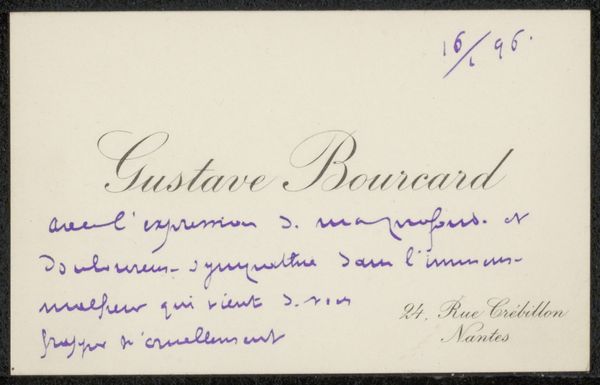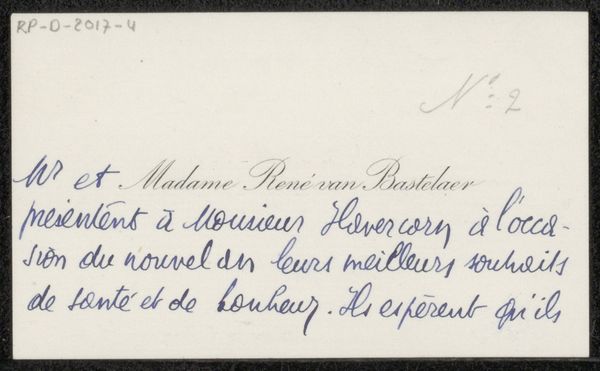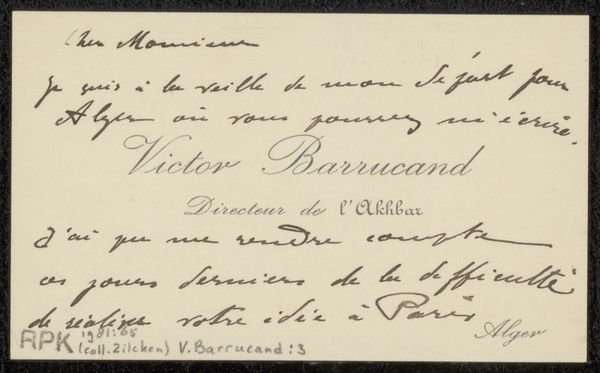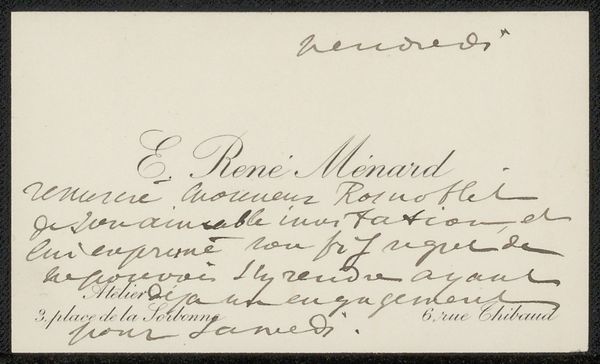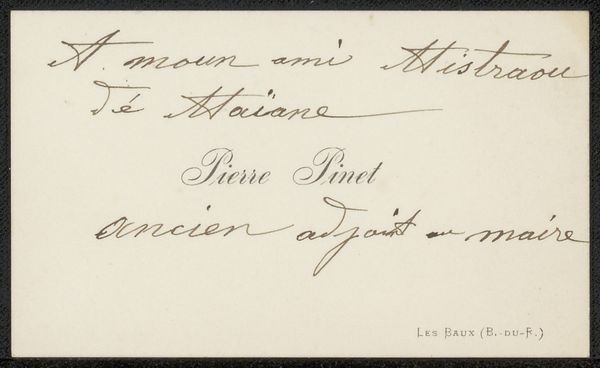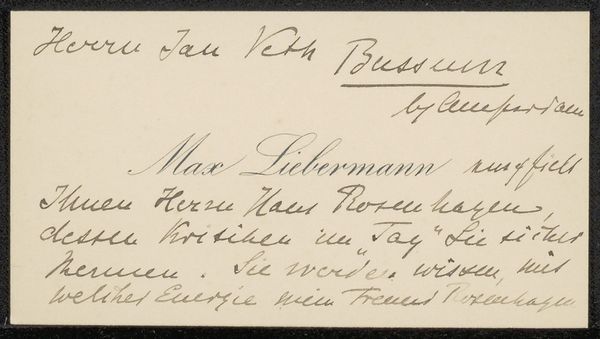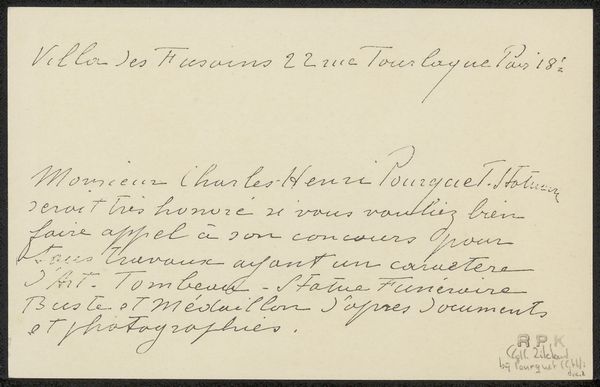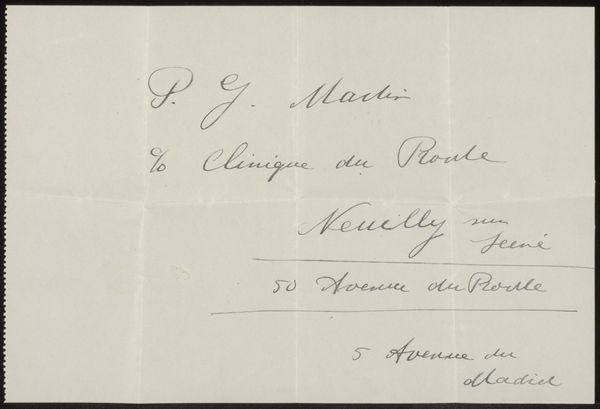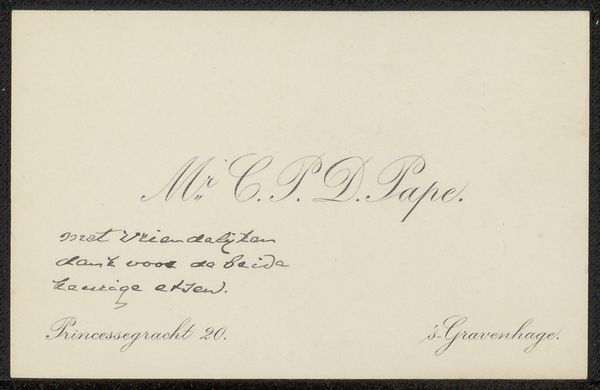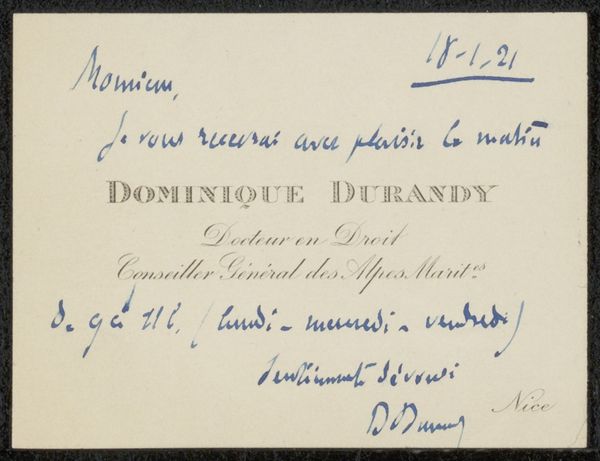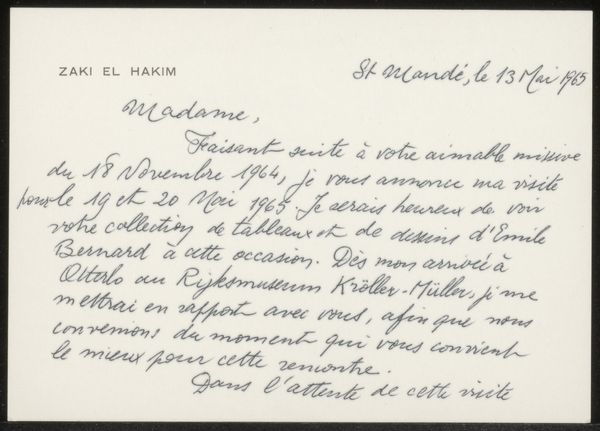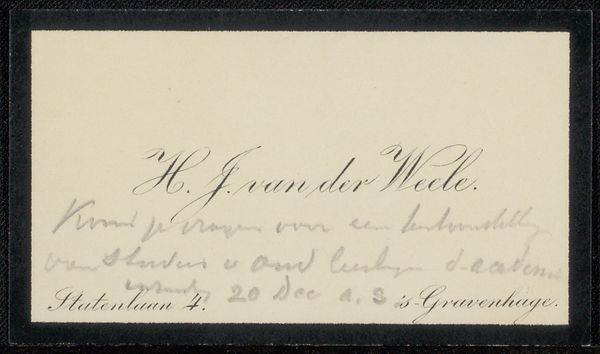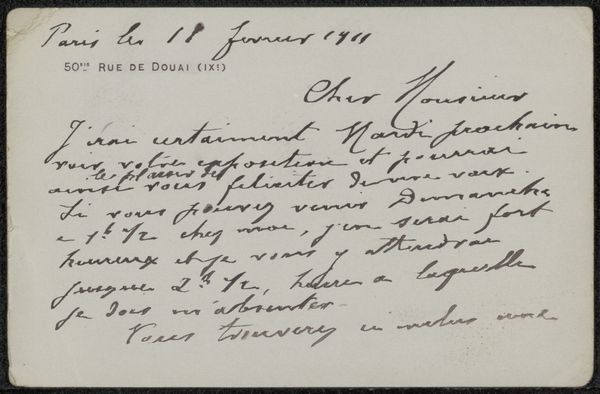
drawing, ink, pen
#
script typeface
#
drawing
#
script typography
#
hand-lettering
#
hand drawn type
#
hand lettering
#
ink
#
hand-written
#
hand-drawn typeface
#
intimism
#
thick font
#
pen
#
handwritten font
#
calligraphy
#
small lettering
Copyright: Rijks Museum: Open Domain
This calling card was made by Gustave Bourcard, likely in the late 19th or early 20th century, using ink on paper. This wasn't fine art, but rather an example of ephemera, everyday items that offer insight into social practices. The delicate lines and cursive script show the impact of Bourcard's pen on the paper's surface, and also point to the broader social context of the time. Cards like these were produced using standardized printing and writing styles, often mass-produced, reflecting the rise of industrial capitalism and the commercialization of social interactions. Yet, the handwritten note hints at individual expression within standardized norms. This calling card serves as a reminder of how materials and making are embedded in our understanding of social life. By recognizing the cultural significance of something as simple as a calling card, we blur the boundary between fine art and everyday craft.
Comments
No comments
Be the first to comment and join the conversation on the ultimate creative platform.
